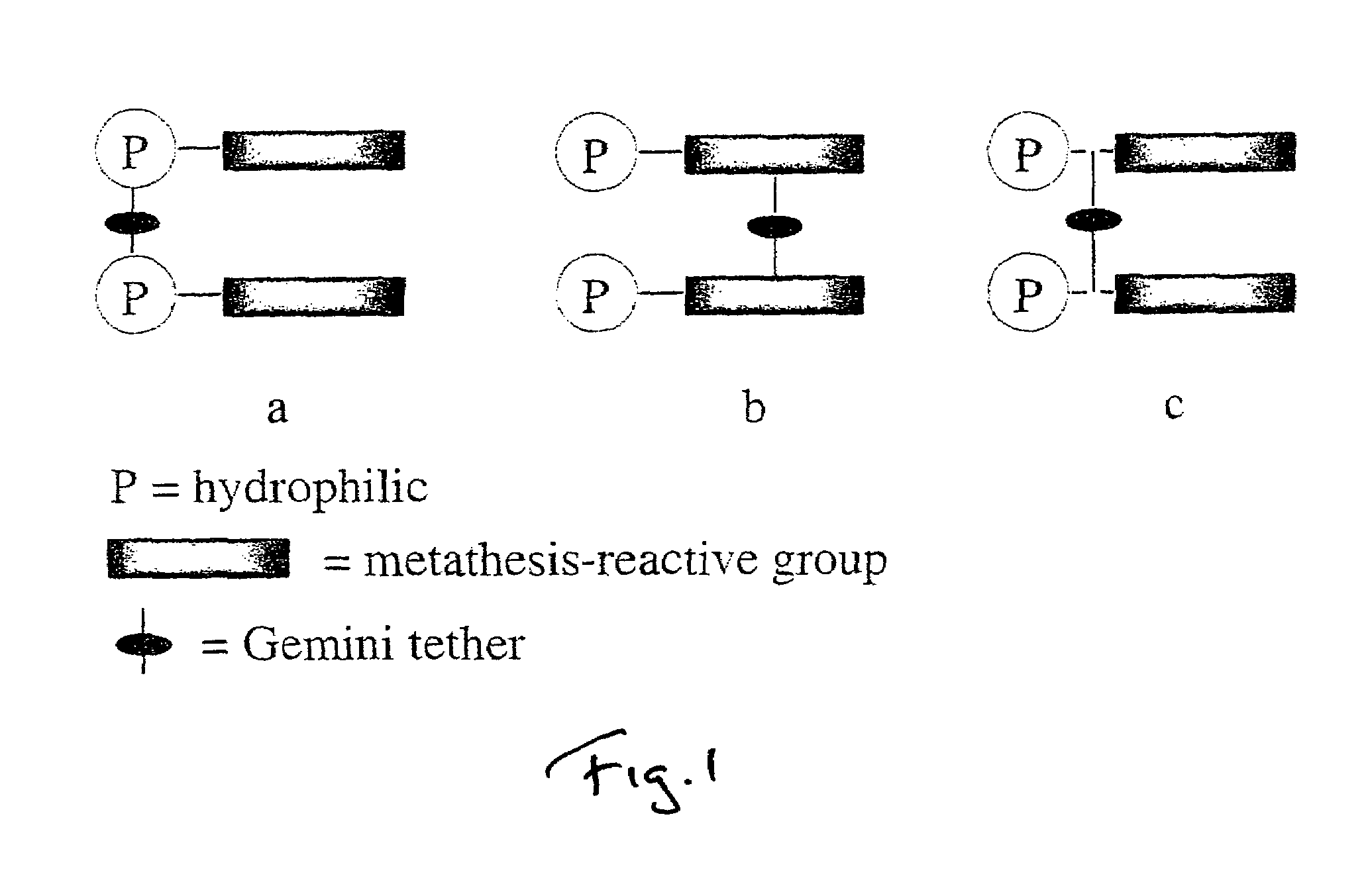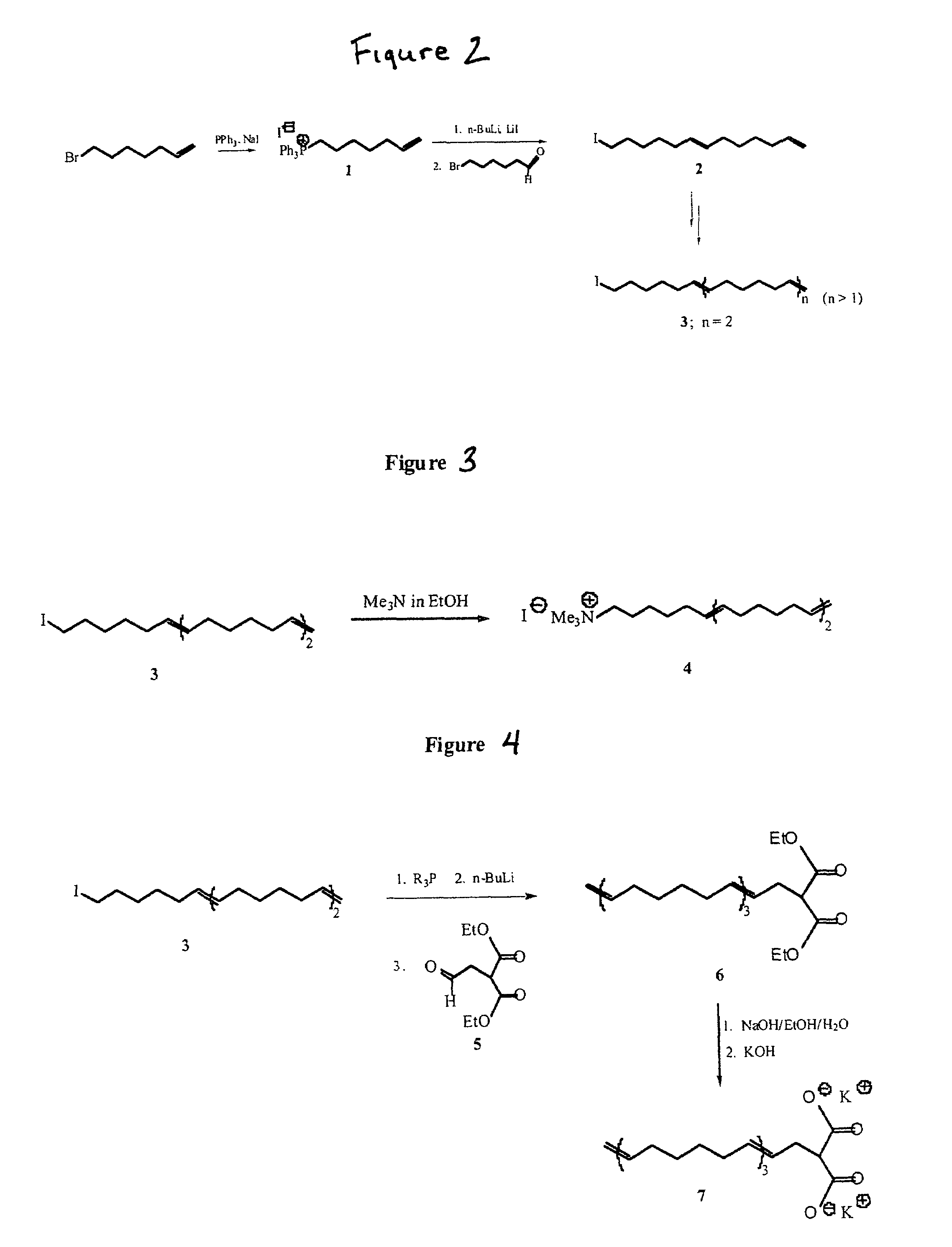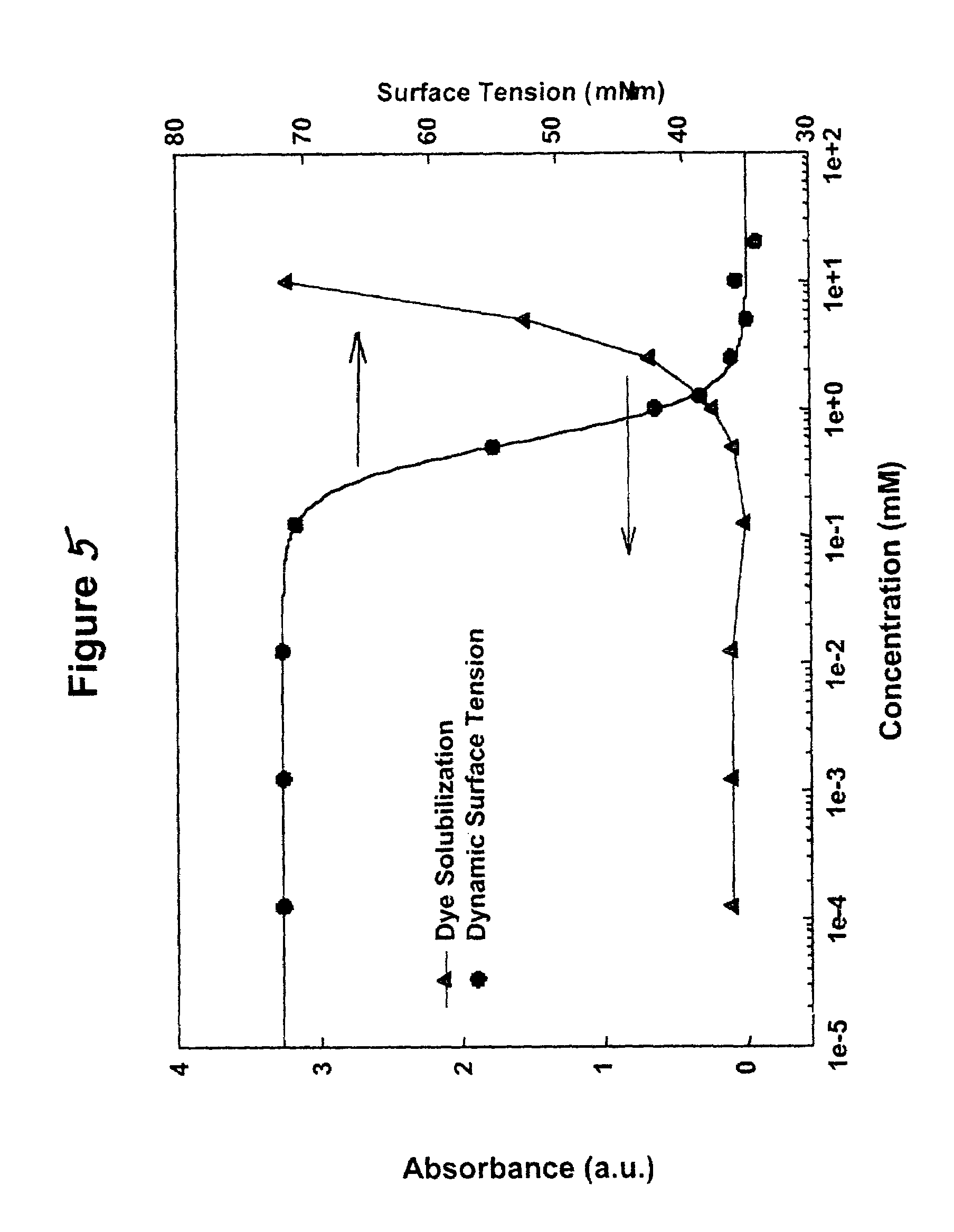Metathesis depolymerizable surfactants
a technology of surfactants and metals, applied in the field of surfactant compounds, can solve the problems of significant technical challenges in the removal process
- Summary
- Abstract
- Description
- Claims
- Application Information
AI Technical Summary
Benefits of technology
Problems solved by technology
Method used
Image
Examples
examples
[0043]In accordance with the present invention a surfactant molecule can be prepared by methods illustrated by the representative synthesis outlined in FIG. 2, which shows a synthesis for an oligo-(1,6-hexadienyl) surfactant tail fragment. Other synthetic strategies for generating double bond functionalities (dehydrations, dehydrohalogenations, other chemically- or thermally-induced eliminations, alkyne reductions) may be employed via conditions familiar to those skilled in the art.
[0044]As shown in FIG. 2, 1-heptenyl-7-triphenylphosphonium iodide 1 can be prepared from 7-bromo-1-heptene (other tertiary phosphine reagents may be employed). Subsequent Wittig condensation of the phosphorus ylide of 1 with 6-bromo-1-hexanal in the presence of LiI gave 13-iodotrideca-1,7-diene 2 as mainly the iodide containing 5-8% (by NMR and gas chromatography) of the 13-bromo endgroup. The presence of LiI exchanges the alkyl bromide endgroup for an iodide and encourages trans-alkene formation. This m...
PUM
| Property | Measurement | Unit |
|---|---|---|
| hydrophilic | aaaaa | aaaaa |
| polar | aaaaa | aaaaa |
| volatility | aaaaa | aaaaa |
Abstract
Description
Claims
Application Information
 Login to View More
Login to View More - R&D
- Intellectual Property
- Life Sciences
- Materials
- Tech Scout
- Unparalleled Data Quality
- Higher Quality Content
- 60% Fewer Hallucinations
Browse by: Latest US Patents, China's latest patents, Technical Efficacy Thesaurus, Application Domain, Technology Topic, Popular Technical Reports.
© 2025 PatSnap. All rights reserved.Legal|Privacy policy|Modern Slavery Act Transparency Statement|Sitemap|About US| Contact US: help@patsnap.com



